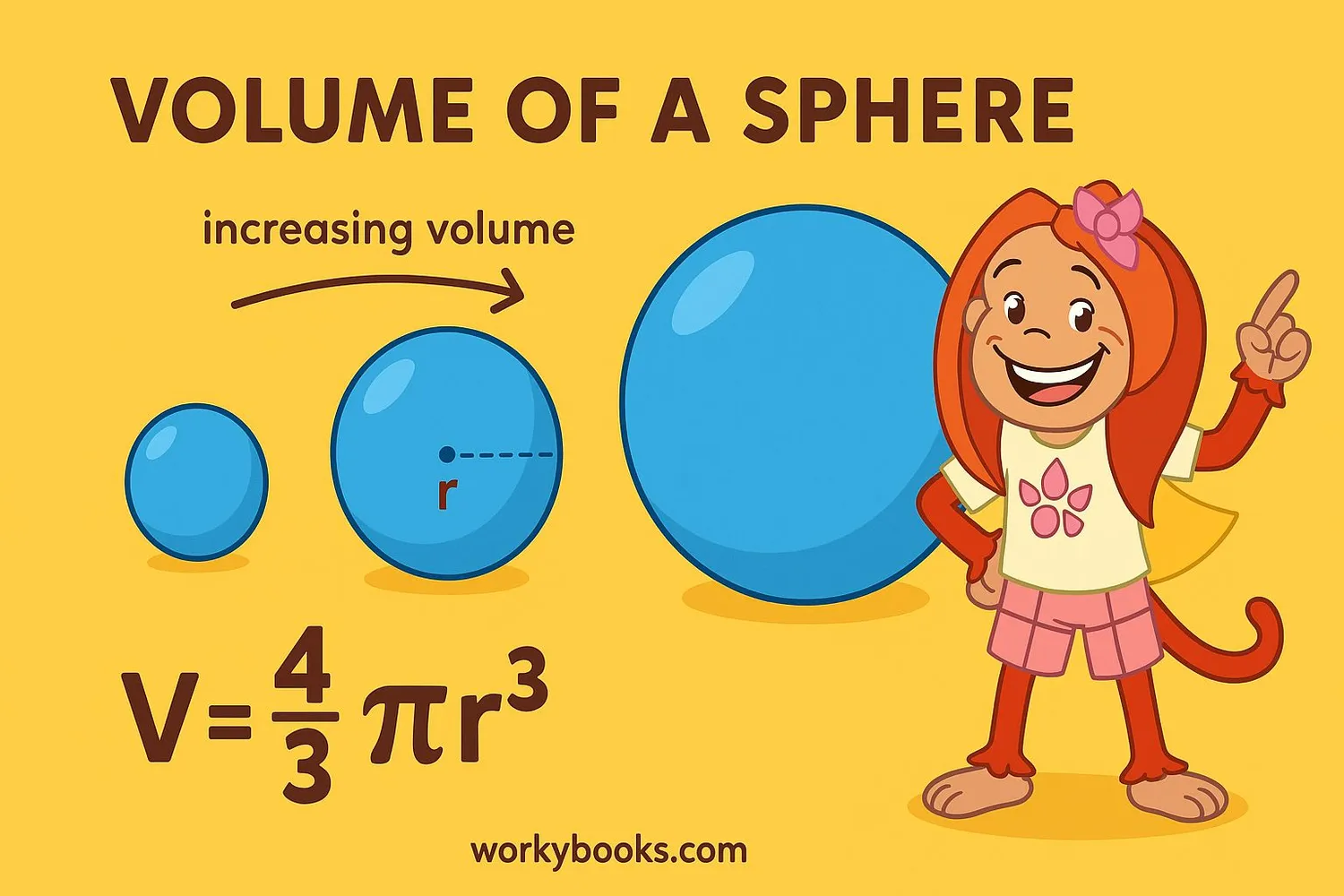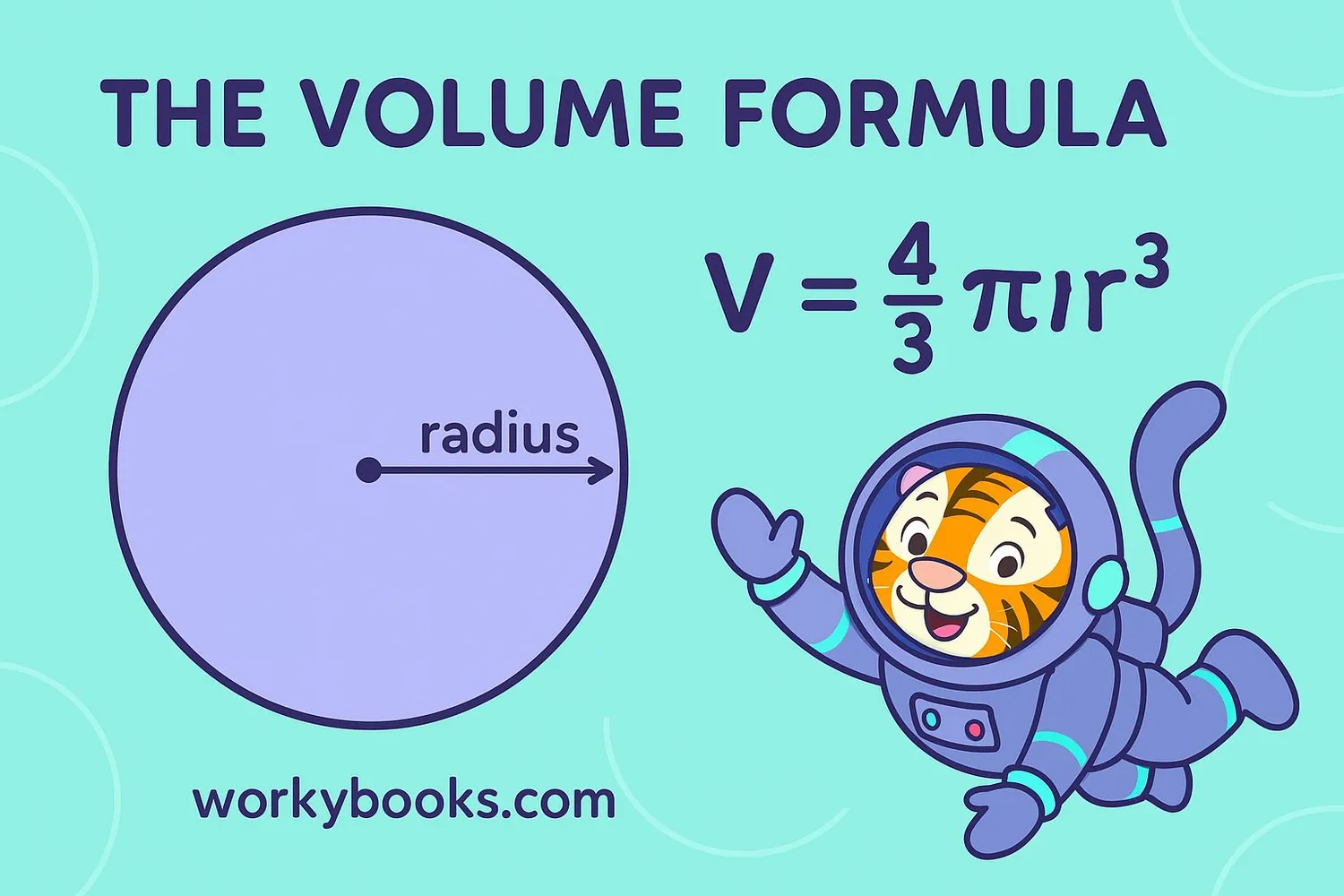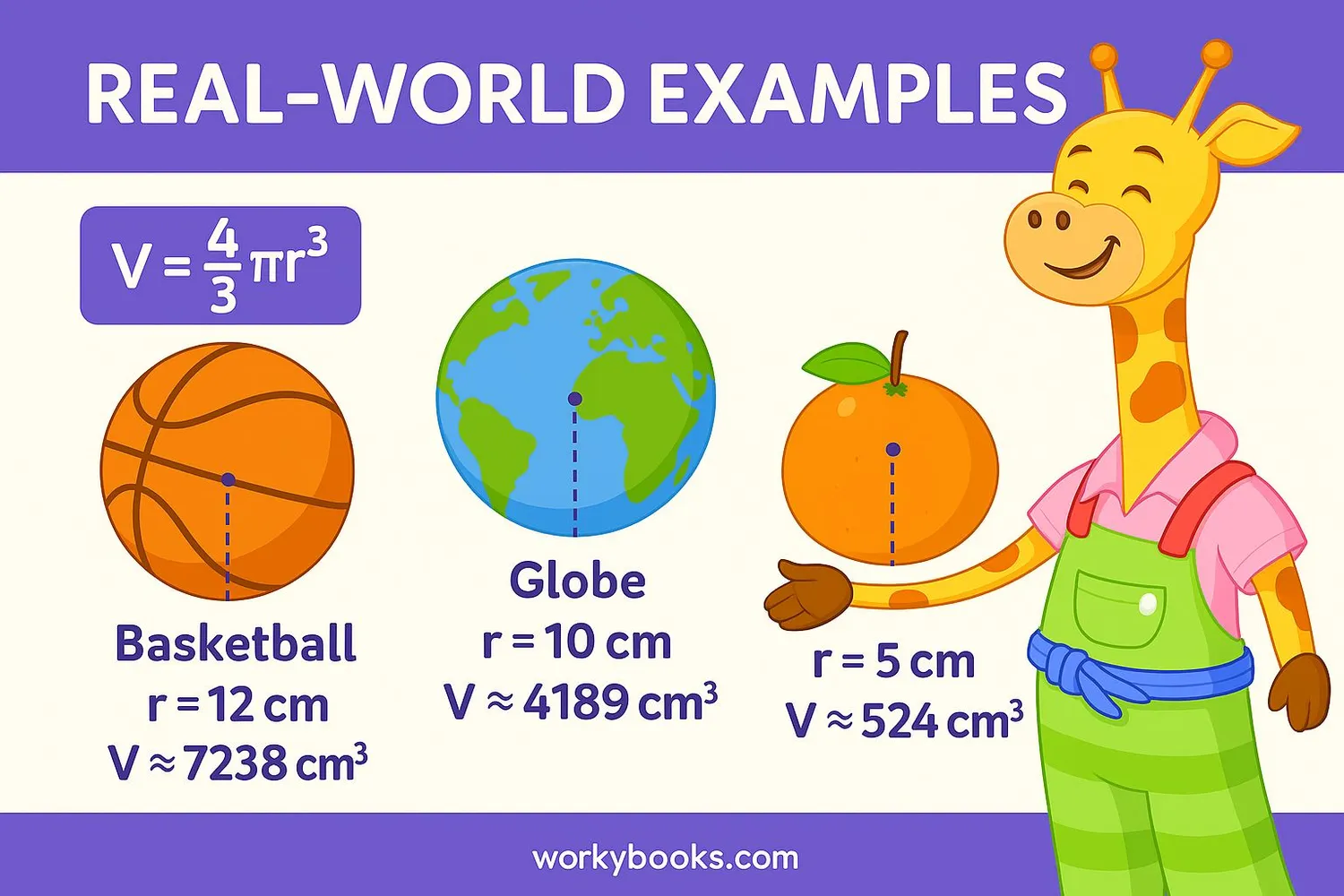Volume of a Sphere - Definition, Examples, Facts & Quiz, FAQ, Trivia
Learn how to calculate the space inside round 3D shapes with easy explanations and practice activities
What is Volume of a Sphere?

The volume of a sphere is the amount of space inside the round 3D shape. Imagine filling a ball with water - the volume tells us how much water it can hold.
A sphere is a perfectly round three-dimensional shape where every point on its surface is equally far from its center. Examples include basketballs, marbles, and planets.
The volume depends on the sphere's size, specifically its radius (the distance from the center to the edge). Bigger spheres have more volume because they can hold more inside them.
Key Concept
Volume measures how much space is inside a 3D shape. For spheres, we calculate it using the radius (distance from center to edge).
The Volume Formula

Mathematicians discovered a special formula to calculate the volume of any sphere:
Volume of a Sphere Formula
Where:
V = Volume
π ≈ 3.14 (pi, a special number)
r = radius of the sphere (distance from center to edge)
4/3: This fraction helps adjust the calculation for the sphere's round shape.
π (pi): A special number (about 3.14) used in circle and sphere calculations.
r³: The radius multiplied by itself three times (radius × radius × radius).
To use the formula:
1. Measure the sphere's radius
2. Multiply the radius by itself three times (r³)
3. Multiply by π (≈3.14)
4. Multiply by 4/3
5. The result is the volume!
Remember
The radius is half the diameter (the full width across the sphere). Always use the radius in the formula, not the diameter.
Real-World Examples

Let's practice calculating volume with some real-world examples:
Example 1: A basketball has a radius of 12 cm. What is its volume?
Solution: V = 4/3 × π × r³ = 4/3 × 3.14 × (12 × 12 × 12) ≈ 7234.56 cm³
Example 2: A marble has a radius of 0.5 cm. What is its volume?
Solution: V = 4/3 × π × r³ = 4/3 × 3.14 × (0.5 × 0.5 × 0.5) ≈ 0.52 cm³
Example 3: A globe has a diameter of 30 cm (so radius = 15 cm). What is its volume?
Solution: V = 4/3 × π × r³ = 4/3 × 3.14 × (15 × 15 × 15) ≈ 14130 cm³
Example 4: The Earth has a radius of about 6,371 km. What is its approximate volume?
Solution: V = 4/3 × π × r³ = 4/3 × 3.14 × (6371 × 6371 × 6371) ≈ 1,083,206,916,846 km³
Notice how volume increases dramatically as the radius gets bigger because we're cubing the radius!
Practice Tip
Try measuring spherical objects around you (balls, fruits) and calculate their volumes using the formula!
Comprehensive Practice Quiz
Test your understanding with this 5-question quiz about sphere volume. Choose the correct answer for each question.
Frequently Asked Questions
Here are answers to common questions about sphere volume:
Math Trivia
Discover interesting facts about spheres and volume:
Ancient Discovery
Archimedes discovered the formula for sphere volume over 2000 years ago! He was so proud of this discovery that he requested a sphere inscribed in a cylinder be placed on his tombstone.
Perfect Shape
Of all shapes with the same surface area, the sphere has the largest possible volume. This is why bubbles and water droplets form spheres - nature tries to hold the most volume with the least surface.
Planet Earth
Earth's volume is about 1 trillion cubic kilometers! That's 1,083,206,916,846 km³ to be exact. Despite being so large, Earth isn't a perfect sphere - it's slightly flattened at the poles.
Largest Sphere
The largest man-made sphere is the "Unisphere" in New York, built for the 1964 World's Fair. It's 36.5 meters in diameter and represents our planet. Its volume is about 25,000 m³!


